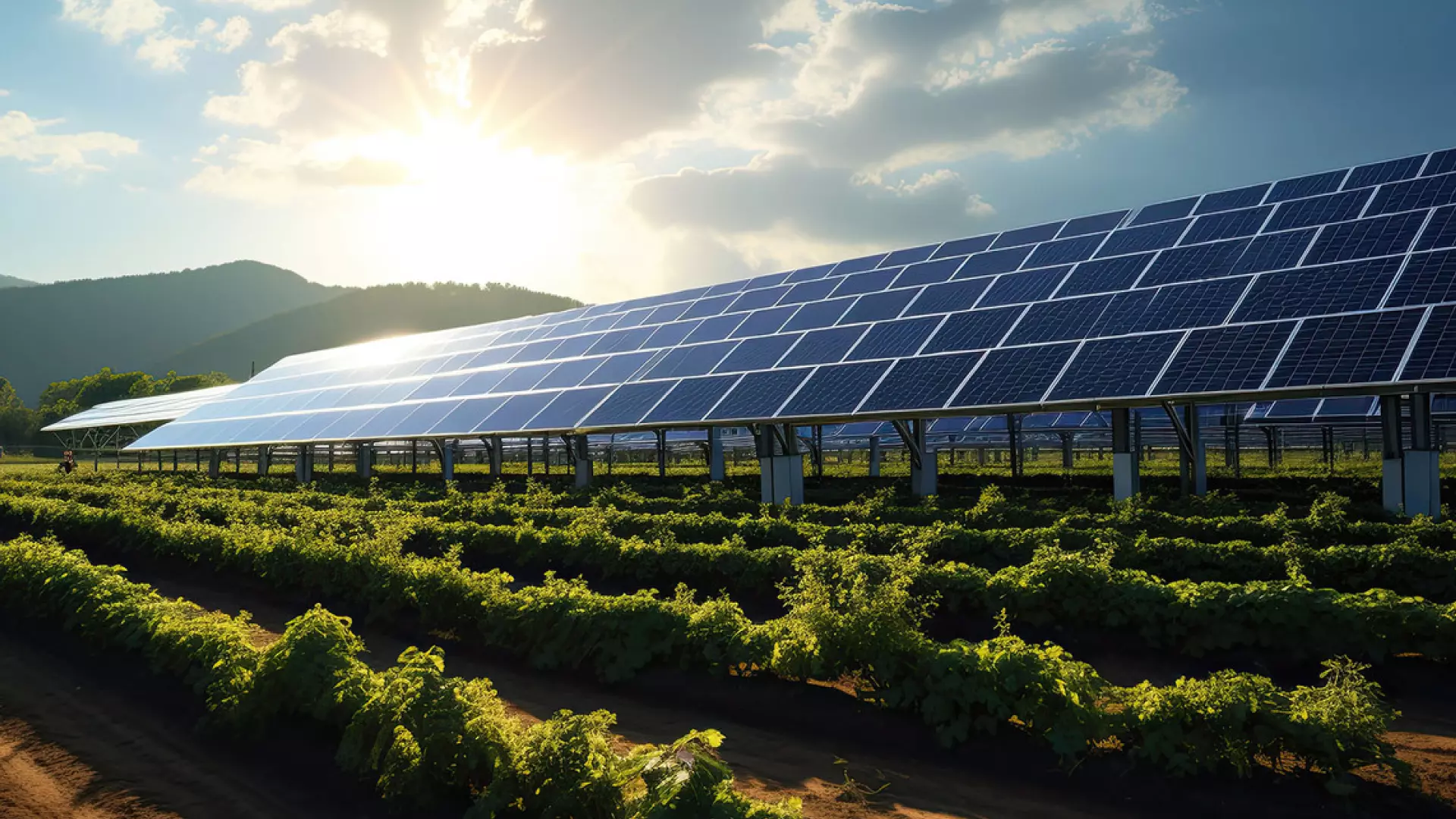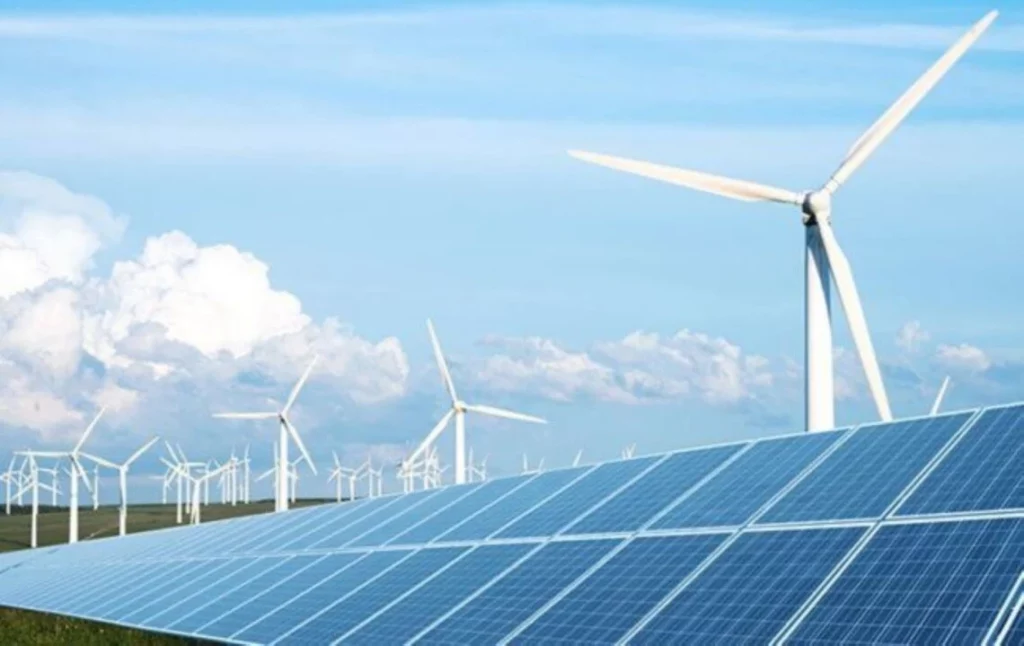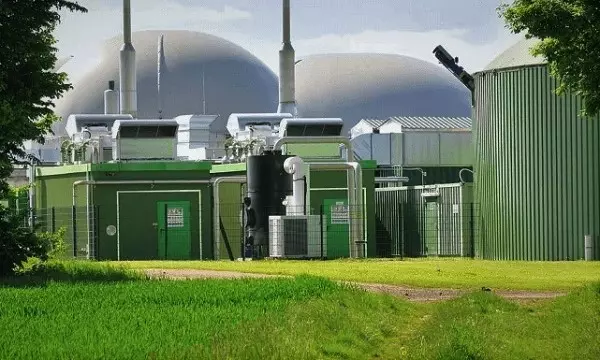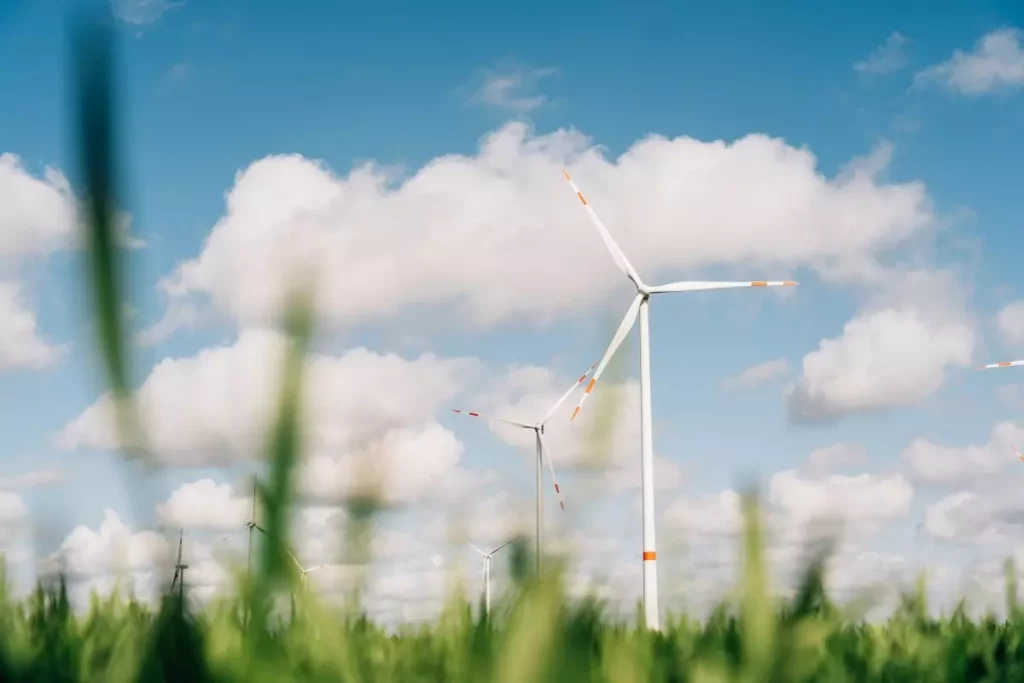
Agrovoltaics: a new model of synergy between food and energy production
10.10.2025Agrovoltaics is an innovative model that combines food and energy production on the same land. Solar panels installed above fields allow for simultaneous crop cultivation and electricity generation, creating a true symbiosis between agriculture and renewable energy.
For Ukraine, this field holds special significance. The country is facing a deep energy crisis, while the agricultural sector seeks ways to reduce costs and increase efficiency. Every hectare of land must work to its fullest – and agrovoltaics makes that possible. It strengthens both the nation’s food and energy security.
Dual effect: harvest + energy
Beneath solar panels, a natural microclimate forms that helps retain soil moisture and protects crops from heat, hail, or heavy rain. For heat-sensitive crops such as berries, lettuce, or greens, these are ideal conditions – in some cases, yields even increase.
The panels also serve another function – providing the farm with its own electricity. This energy powers irrigation systems, cooling, storage facilities, or equipment. As a result, farms gain autonomy and reduce energy dependency, while the land is used with maximum efficiency.
Global experience and Ukraine’s first steps
In Germany, Italy, France, Japan, and the U.S., agrovoltaics has already become part of agricultural policy. European farmers grow grapes, vegetables, and berries under panels, achieving more stable harvests and earning additional income from electricity generation.
Ukraine has also taken its first steps. The pilot project “TeslaAgro” in the Zhytomyr region combines a solar power plant with a berry farm. Blueberries grow beneath the panels, while sheep graze the grass – a living example of how agrovoltaics works even under local climate conditions.
This synergy shows that agrovoltaics is not only an innovation but also a practical solution: it helps farmers cut costs, reduce risks, and care for the environment at the same time.
Challenges for Ukraine
Despite its obvious advantages, the development of agrovoltaics in Ukraine faces several barriers:
- Legislative gap. There is no clear legal framework allowing solar installations on agricultural land.
- High initial investment. Elevated structures enabling farming under panels require additional costs.
- Lack of expertise. Successful sector growth requires trained professionals – energy engineers, agronomists, and designers.
These challenges can be addressed through targeted state support programs, the development of financial instruments (grants, preferential loans), and cross-sector cooperation between the energy and agricultural industries.
The future of agrovoltaics: a strategic perspective
After the war, energy independence and sustainable recovery will become key priorities for Ukraine. Agrovoltaics can be one of the solutions – it simultaneously strengthens food security, creates new jobs, and reduces pressure on the national power system.
According to the International Energy Agency (IEA), by 2050 solar power will become the world’s largest source of electricity generation. Ukraine has all the prerequisites to join this transformation – fertile land, high solar irradiation, and strong entrepreneurial potential.
Become a member of 100 RE UA
Switching to 100% renewable energy in Ukraine is possible!




